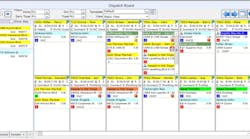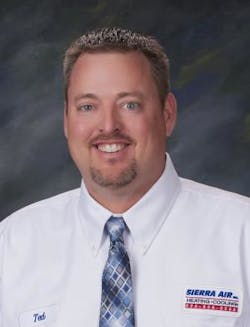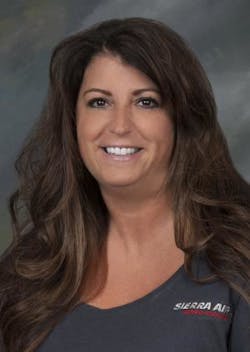As your teams continue to make their endless winter service calls, it’s essential to have a nearly flawless dispatching protocol. An excellent dispatching methodology gives your service teams the confidence and organization that help reduce their daily stress. And, your customers will get their HVAC systems serviced on time, every time.
Let’s establish that your service dispatching software is as up-to-date as it can be. After that, the efficiency of your dispatching comes down to the people, or the single person, who works the dispatching desk.
Ted Lenzora, service team leader of service sales for Sierra Air, Reno, Nev., used one word to define a great dispatcher: ”strong.”
“A simple answer for us is to have a strong dispatcher. Our customer service representatives will field daily calls, but at the end of the day, the dispatcher is the person who looks ahead and organizes the calls so everything flows properly,” Lenzora says. “We’ve got a good software system and have used GPS, but the simple answer is to have a strong dispatcher. The dispatcher can make or break a technician’s day.”
The dispatcher can make or break a technician’s day. — Ted Lenzora
By “strong,” Lenzora means the dispatcher must have a strong personality, to be able to assert himself or herself with the technicians who may want to do things differently.
Sierra Air’s strong dispatcher, Michelle Percia, knows how to get things done.
“There’s no nonsense with me, and I don’t sugarcoat things,” she says. “Being direct comes across perfect for the technicians. It gets the job done without being bossy. I think they respect that. They like the direction I provide, and knowing what they need to do. That’s the reason why it works.”
Organization Essential
An effective dispatcher must be organized. They must know the area or zone they’re dispatching techs to, and the best way to route the teams to a variety of daily locations.
“Sierra Air serves a broad area in Nevada and portions of northern California — 60 miles to the south and west, about 120 to the north, and sometimes a couple hundred miles to the east. We can spend some considerable windshield time, so that’s why having a strong dispatcher will eliminate as much windshield time as possible,” Lenzora says.
Percia relocated to Reno from the east coast 30 years ago, and therefore, knows the region very well.
“It’s nice to have someone who’s lived here for many years and knows the area, and where to best put people,” Lenzora says. “If you have a technician in a certain zone, she knows he’s there, and if another call comes in she can instruct him to hit that one next. It flows very well.”
A great dispatcher welcomes the “craziness” that often comes with a busy service day.
“I’m a multi-tasker. I like to be handed 20 things at once,” Percia says. “I need to be constantly kept busy. It’s my personality. I’m outgoing, so I keep them going.”
Morale Boosters
A good dispatcher is also a good cheerleader, someone who can encourage technicians through difficult times.
“Sometimes they get a call that becomes a problem. If they call in and are frustrated, I try to lift their spirits,” Percia shares. “They vent to me, and I get them going with a positive attitude.”
Sierra Air maintains about 3,000 maintenance agreements, the “Home Comfort Club”. Those customers are always served first, before “no-heat” or “no-cooling” calls from non-service agreement customers. Customers without service agreements are placed on a waiting list and served as soon as possible. One team of maintenance technicians are devoted to Home Comfort Club members. Mid-level technicians are assigned a set amount of maintenance calls each day, and a couple of slots are left open for no heat or no cooling calls. Senior level techs are scheduled for maintenance calls only if they are requested by the customer.
Sierra Air uses SAWIN Service Automation dispatching software (sawinpro.com). Techs have given up tablets, and now use the iPhone 6Plus. Lenzora says the 6Plus screen is large enough for techs to see critical information, and provides ample room for taking notes.












